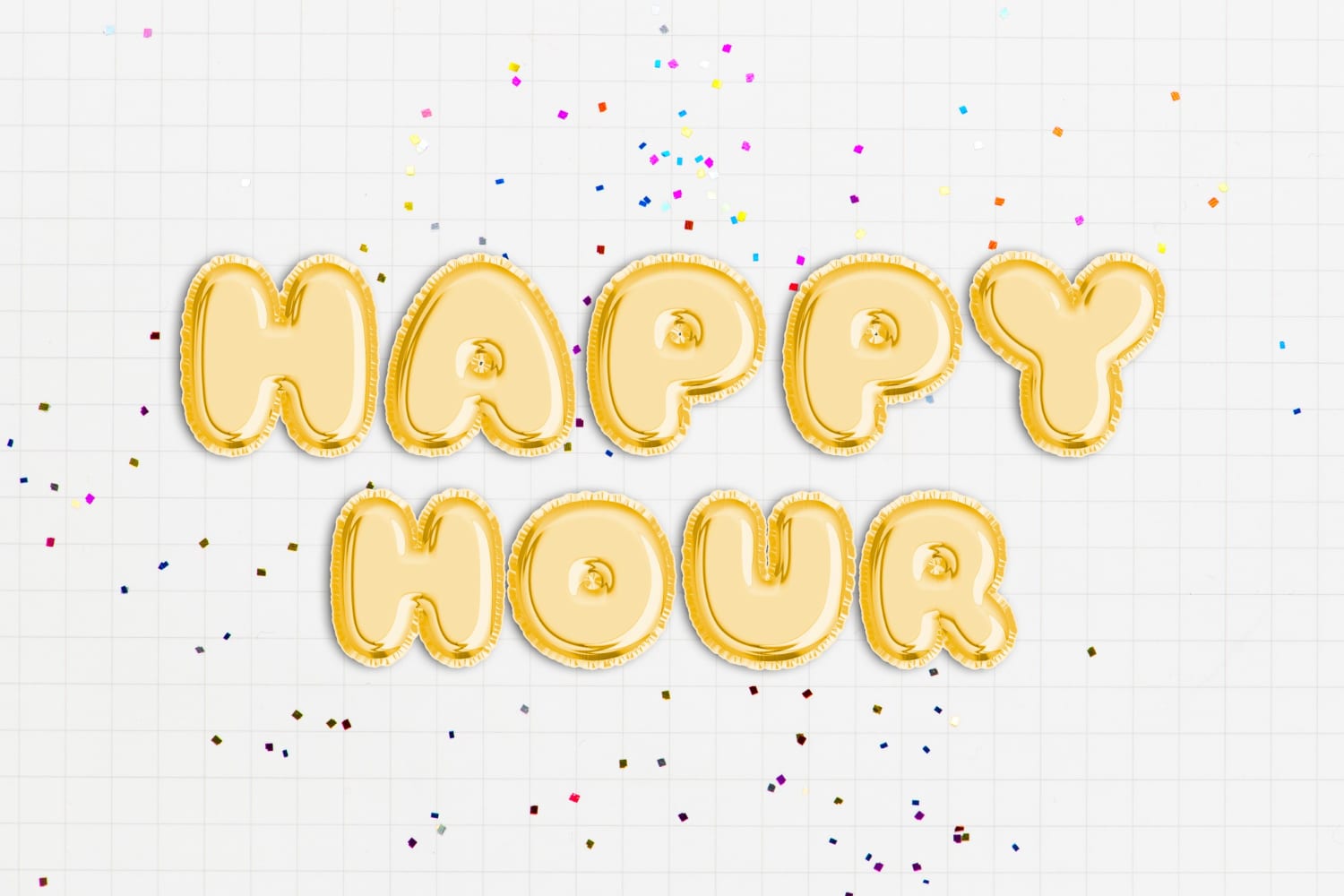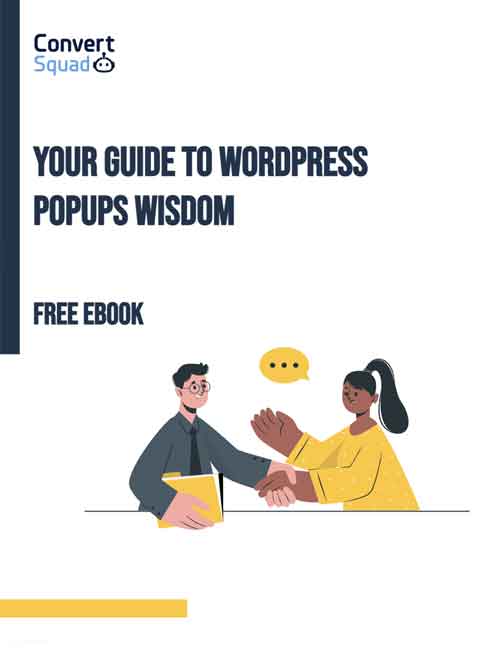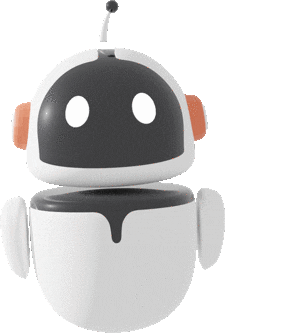
- What is Buyer Behavior?
- Mythbusting: Consumers are Rational
- Direct the Rider, Motivate the Elephant, Shape the Path
- How Consumers Make Decisions
- 3 Stages of the Buyer’s Journey
- A Helicopter View on Consumer Psychology
- The Science of Persuasion with Robert Cialdini
- How it all Translates into Marketing Strategies
- What is Neuromarketing?
- The Ethical Side of Neuromarketing – How Far Can We Go?
- Bottom Line
What comes to your mind when you think about the term ‘buyer behavior’? A random teenage group competing on who has the latest sneakers on the market? Or maybe a thoughtful person carefully researching every detail of the product they are about to buy? Well, let me tell you something. It’s both these options, and even more.
Today’s article will discuss the factors that influence buying decisions and buyer behavior, how consumers make decisions, the science behind persuasion, and its marketing aspect. So, you’d better buckle up cause we are about to give you some excellent insights.
Let’s start with the basics.
What is Buyer Behavior?
Buyer behavior involves a series of steps and actions people take when purchasing products or services of any kind. It is synonymous with “consumer purchasing behavior,” which often refers to individual customers rather than businesses. Buyer behavior is what happens in our brains and what factors contribute to decision-making. It is a driving force behind any marketing strategy. Crazy, isn’t it? Don’t freak out just yet; there’s more to it.
Buyer behavior is concerned with customers’ emotional, mental, and behavioral responses. As a result, it borrows ideas from several disciplines, including psychology, biology, science, and economics hence why emotion plays an essential role in buying and consuming.
And without further ado, let’s debunk the myth of the rational consumer for you to see how emotionally entangled consumers can be and to prove that there is a considerable gap between rational and emotional shopping.
Mythbusting: Consumers are Rational
Consumers believe they are acting rationally to maximize their self-interest when making purchasing decisions. Marketers also think that consumer purchasing decisions are grounded on a reasonable assessment of the qualities and attributes of the goods they offer, but that’s not always the case. When we use psychological research methodologies to investigate shopping behavior, the myth of the rational consumer becomes obvious.
Let’s take a look at the elephant-rider metaphor, which fits perfectly with our rational and emotional sides.
Direct the Rider, Motivate the Elephant, Shape the Path
According to Dan Heath, author of Switch: How to Change Things When Change is Hard, change is about the “long game” of altering direction through incentive rather than interventions, as we usually approach it presently.
The elephant and the Rider are like two different systems in our brains.
- One is the emotional system
- The other is the rational system
Heath built his presentation around the elephant-rider metaphor, which argues that everyone has two sides—a rider and an elephant.
The Rider symbolizes the analytical strategist, the evidence-based decision-maker, and the reasonable thinker. On the other hand, the elephant is an emotional guy who draws back based on emotion and intuition.
The most significant barrier to change, according to the author, is a neurological clash between our intellectual and emotional thoughts. This produces stress in our minds, which might jeopardize any change endeavor. Jonathan Haidt, a social psychologist, created the Rider and the Elephant analogy, which the Heath brothers expanded upon by adding a third component: the Path.
This well-known model is the foundation for any effective change. You must do three things if you want to be a change leader.
- Give direction: The Rider is a symbol for your analytical, rational side, the part of us that plans and solves problems. It requires a defined direction in which to proceed.
- Motivate: To supply the power for the voyage, the Elephant, which represents your emotional side, must be motivated.
- Shape the path: If you want the Rider and the Elephant to go in a progressive path simultaneously, you must shape the Path, or the external, situational elements, by making it easier to move, cutting the distance, or eliminating any barriers.
The Elephant and the Rider is a fantastic foundation for figuring out who you are and what drives you. This example can be very much applied to buyer behavior in general.
Whether you’re thinking about buying that product on the market, these two systems come into play. The Rider represents the aware, intellectual mind, while the elephant represents the unconscious, emotional mind, which the Rider cannot control all by himself. The Rider in buying is the buyer trying to make a reasonable decision but is typically affected by gut feelings and emotions (the elephant)—whether consciously or unconsciously.
Every day, we make several options, ranging from eating for lunch to finding our place and purpose in life. You’d think we’d approach them rationally and logically. But this is not quite the case.
So how do consumers make decisions? Dan Ariely can only answer this question. Dan Ariely is a Duke professor of behavioral economics and has studied human behavior for more than 20 years. He examines the many ways in which consumers are not rational when making decisions and how this irrationality is almost always purposeful and easy to predict.
One thing is clear: with the rise of technological change, decision-making is more complex than ever. Not only that, but there’s a reasonable probability we’ll come to regret our choices. You could decide before the world became digital, and you would rarely be able to realize that it was a bad one. But, on the other hand, if you buy something online today, it’s only a click away from discovering that the prices have changed the next day, and remorse can set in. Or even worse, you might not get what you thought you would get.
According to Ariely, the key takeaway here is relativity. It’s the theory that people don’t know how much something is worth, so we try to estimate it by comparing it to objects in direct proximity. As a result, we have the power to make things feel more or less desirable to other people by changing their value of the things around them, rather than changing the worth of the object itself.
Even when we believe our decisions are guided solely by logic and rationality, emotions play a significant role. For example, according to studies, judges are more likely to be merciful with prisoners early in the day or after a break, such as lunch.
“You are anywhere between two and six times more likely to be released if you are one of the first three prisoners considered versus the last three prisoners considered,” said Jonathan Levav, associate professor of business at Columbia University and co-author of the paper.
The research authors examined over 1,000 decisions given by eight judges in 2009. They discovered that the likelihood of a favorable ruling culminated at the start of the day and dropped over time from about 65% to nearly zero before spiking back up to after a meal or snack break.
It’s safe to say that emotion lies at the heart of every decision we make. Be it sentencing someone to a life behind bars or choosing the topping for our ice cream. So let’s dig deeper into how customers make buying decisions and find out the key takeaways from this process.
How Consumers Make Decisions
The consumer decision-making process involves consumers becoming aware of and identifying their wants, gathering information on how to meet their needs, weighing various available options, making a buying decision, and evaluating their purchase.
When establishing a marketing strategy for your company, it’s vital to consider and understand buyer behavior and what triggers it. It’s almost as important as salt is in your food. Without it just leaves your mouth dry, and that’s not the outcome you want.
Understanding the consumer decision-making process is critical for every organization, but eCommerce businesses have a distinct advantage in this regard. Online merchants may utilize that data to design conversion techniques for every stage of the process because online shoppers provide so much more data than those in brick-and-mortar locations.
People build brand impressions every day based on commercials, news broadcasts, conversations with family and friends, and product experiences, among other things. Unfortunately, much of that visibility is wasted unless people are actively shopping. But what happens if you get triggered to make a purchase? What does your customer journey look like?
3 Stages of the Buyer’s Journey
What exactly is the Buyer’s Journey?
It is the journey or purchasing process that consumers go through to become aware of, evaluate, and purchase new products and services. It comprises three stages representing the inbound marketing plan: awareness, consideration, and decision.

- Awareness
The customer buying process begins with the client having an issue that a product or service can solve. For example, let’s say your computer is running slowly and needs a new one. Or the jacket you already own won’t suffice for the hike you’re planning this weekend. Does this ring a bell? This is where it all begins. The customer becomes aware of the issue they are currently facing.
- Consideration
It may appear straightforward, but once a customer identifies a problem, they collect data to find a solution and consider several options for solving their issue. The goal at this point is to get your brand on your client’s radar.
- Decision
After all the awareness and consideration, the last part is the decision. The customer assesses and selects the best carrier to manage the solution at this stage.
A Helicopter View on Consumer Psychology

Understanding consumer behavior and discovering what your buyer wants from your business is the key to more significant sales when converting customers.
The concept of ‘Thinking Fast and Slow,’ also known as System 1 and System 2 thinking, was popularized by Nobel Laureate Daniel Kahneman and is arguably the most recognized theory in the world of behavioral science. This two-system paradigm has been extensively embraced because of its simplicity and intuitive character.
System 1
The mind’s processes are divided into two different systems in Kahneman’s model: The brain’s rapid, instinctive, and intuitive method is known as System 1. The fundamental mental activities we are endowed with, such as observing the world around us and recognizing objects, are all part of System 1.
System 2
System 2 is the “slower, analytical mode of the intellect, where reason reigns supreme.” System 2 activity is usually triggered when we perform something that is not natural to us and needs intentional mental effort.
The following puzzle is a frequent example of the two systems: A bat and a ball will cost you $1.10. The bat is $1 more expensive than the ball. What is the price of the ball?
When presented with this puzzle, most individuals guess 10 cents right away. But, on the other hand, the proper answer is 5 cents, which most people can figure out after some additional thought.
For years, this has been used as an excellent example of how two sorts of brain processes govern our thinking: rapid and instinctive versus slow and analytical.
The multiple systems hypothesis is based on the separation of brain functions for decision-making and perceived specialization. However, it’s vital to remember that our decisions are based on a combination of data from both systems.
Put another way; the brain isn’t divided into two halves. Systems 1 and 2 are not different entities; they work together. Both methods are susceptible to bias and error; neither is categorically “good” or “bad.”
The theory of System 1 and System 2 from ‘Thinking Fast and Slow’ has quickly gained popularity both in the academic world and non-academic world. However, it’s important to note that the two are not tied together and can be biased and make specific errors and mistakes.
The Science of Persuasion with Robert Cialdini
In 1984, Robert Cialdini published his book “Influence: The Psychology of Persuasion.” He investigates the factors that influence people’s decisions, especially sales and purchasing.
At the heart of his research is the notion that decision-making is complex. Hence, people use various guidelines and decision-making patterns when deciding what to do, how to behave, or what course of action to take in a given situation.
Recognizing these patterns and using them ethically can significantly increase the chances of a well-established marketing strategy performing at higher rates. However, there is no doubt that there is a science to how we are persuaded, and much of it can be a bit shocking.
When it comes to persuasion, Cialdini identified six fundamental principles: reciprocity, scarcity, authority, commitment and consistency, liking, and consensus or social proof.
- Reciprocity

Reciprocity is the first of Cialdini’s six Principles of Persuasion. Humans place a high value on equal rights and balance. This implies we don’t like feeling like we owe other people. Therefore, when people have social responsibilities, they try to fulfill them broadly. For example, if someone sends you a birthday present, you will almost definitely want to return the favor and send them something as well.
But here’s the question: Does the value of the birthday present you got to influence the importance of the gift you are about to give? For example, in Cialdini’s study where he experimented on waiters providing small grants for customers such as candy or biscuits at the same time they brought the bill, he found out that giving guests a single candy at the end of their meal doubled tips by about 3% on average.
Surprisingly, tips do not double if the gift is duplicated and two candies are offered. Instead, they quadruple in size, resulting in a 14% increase in tips. And perhaps most intriguing of all is the fact that if the waiter gives one candy and then begins to leave the table, but then stops, turns around, and says, “For you kind people, here’s an extra candy,” tips end up skyrocketing.
Every one of these actions essentially says, “I helped you; now it’s your turn to help me.” The key to implementing the Principle of Reciprocity is to be first to give and to make sure that what you provide is unique and individualized.
2. Scarcity

Scarcity is the second of Cialdini’s six principles. People tend to want something more if the stocks are tight. From the standpoint of persuasion and influence, this means that to increase interest in your product or service, you may benefit from reducing its availability or, at the very least, creating a sense of scarcity.
You can observe this principle in a variety of marketplaces. For example, internet hotel and airline sales platforms frequently state they have only a few seats left at a great price or only two rooms available on the specified date. Hence, Booking. This is done to generate a sensation of scarcity (as well as to add time pressure, which is closely related). Take a look at the example below to understand this topic better.

3. Authority

This is the concept of people following the advice of trustworthy, knowledgeable professionals. For example, we might see dentists in white coats selling us toothpaste in advertisements and airline employees wearing uniforms to show their authority or to represent an airline company. Before attempting to persuade others, science tells us that it’s critical to indicate what makes you a credible, informed authority.
In truth, people who advertise their brilliance and authority are less effective than those who have others do it for them. Surprisingly, it doesn’t seem to matter who the other person is. Even if the person praising you is known to gain directly from it, their words of encouragement improve your influence and persuasion power.
Let me give you a personal example. I first heard about “Sapiens,” the book written by Yuval Noah Harari, because Barack Obama mentioned it as a must-read book. This is how I ended up buying it. For me, Obama was the authority that convinced me to buy the book. I did not need anything else. What about you? Did you ever follow buying advice from an influencer you admire?
4. Commitment and Consistency

People prefer to maintain consistency in their identity or self-image. To put it another way, if I believe myself to be a “friendly” person, I’m more inclined to pursue acts that I consider to be “friendly.”
From the standpoint of persuasion and influence, this implies that if I can persuade you to act vaguely in response to something, you’ll think of yourself as that type of person and be more inclined to work in that manner in the future. You’ll also be more likely to increase your actions in that direction.
5. Liking

What makes one person like another? According to the science of persuasion, there are three key variables. First, we prefer people who are similar to us, appreciate us, and work with us to achieve common goals.
In marketing and advertising, we see this approach applied frequently. For example, almost every advertisement you encounter will show people who are meant to appeal to the target market for the product. The more a customer likes and associate with a person, the more likely they will be affected by that person.
6. Consensus or Social Proof

Consensus, or social proof, is the sixth of Cialdini’s six principles of persuasion. People are social beings that believe it is essential to follow the rules of a social group. This means that we frequently look around to check what other people are doing before making our own while making decisions.
You may have noticed that many hotels leave a tiny card in the bathroom to encourage visitors to reuse their towels and sheets. The majority of them do so by emphasizing the positive impact of reuse on environmental protection. This method turns out to be quite effective, resulting in roughly 35% compliance. Is there, however, a more effective method?
It turns out that approximately 75% of customers who stay in a hotel for several nights reuse their towels at some point throughout their stay. The single most successful message, it turns out, was modifying only a few lines on a sign to honestly point out what comparable past visitors had done, resulting in a 33% boost in reuse.
This notion of consensus or social proof can be challenging to use in the workplace from a personal standpoint. Still, managing your reputation and personal brand may be feasible.
So here are the six scientifically confirmed Persuasion Principles that provide tiny, practical, and often costless improvements that can make a significant difference in your capacity to influence and persuade others ethically. But now, let’s see what we can do about this in terms of marketing.
How it all Translates into Marketing Strategies
While there are many marketing philosophies and tactics to choose from, the goal is always the same: to serve the customer because someone else will do it if you don’t.
Regardless of what you sell, there’s a good chance the market is already crowded. The goal of marketing is to obtain an advantage over the competition, so it is so closely tied to psychology. It’s crucial to keep in mind that you’re dealing with people. And as we’ve seen by now, people are emotional creatures governed by principles and emotional involvement.
There’s good news! You don’t need to be a psychologist to appeal to your potential consumers to stage a practical, emotional appeal. A lot of successful marketers use these tactics. You can, too, with a bit of research and experimentation.
You might be thinking at this time that everything is obvious. But how well do you know who your customer is? What pushes people to make a choice? Understanding how people think and act can differentiate between mediocre and exceptional marketing.
The first stage is to gain a thorough understanding of how consumers make decisions. The challenging element for most marketers is concentrating strategy and spending on the most influential touchpoints.
The marketing effort’s focus must shift to understand the brand better while actively evaluating it in certain circumstances. Others may need to reconfigure their loyalty programs to emphasize active rather than passive loyalists or invest money in in-store activities or word-of-mouth campaigns.
Here are several types of activities you can do if you’re a marketer looking to understand the consumer decision journey better:
- The Foot-in-the-Door Technique
The foot-in-the-door strategy focuses on raising compliance rates and persuading customers to make a purchase. With contributions to the American Cancer Society, Robert Cialdini experimented with this strategy. Two requests for donations were made this way:
- Would you consider making a gift to help?
- Would you consider making a gift to help? Every dime counts.
People were almost twice as likely to donate when using the second variety. People who were asked for a donation with the cent statement did not contribute more minor than those who were not.
What are some ways you may use this in your marketing strategy? Free trials are a common technique to persuade customers to try your product or service. They can upgrade to the premium model once the free trial is over.
- Create a Sense of Scarcity and Urgency
We’ve already talked about this. In marketing terms, this can imply a limited-time offer or only a few seats remaining, like in the case of Booking, for example, that we’ve discussed previously.
Black Friday is an excellent example of using scarcity and urgency in marketing. According to Nerd Wallet, 25 out of 27 retailers had at least one product with the same price as the previous year’s Black Friday ad. So if thousands of people get caught up in Black Friday mania and are willing to spend the same price for an older product model as they were last year, it shows how powerful scarcity is.
- Make Use of Fitt’s Law
Fitt’s Law is a human movement model, which translates to UX and mouse movement in digital marketing terminology. Page load times and the time it takes to execute an activity impact conversion rates. Fitt’s Law contains two parts that determine how long it takes to move a mouse to a specific location:
- Target distance
- Target size
To put it another way, if you want to increase sales or signups, either reduce the spacing between elements or make buttons larger. On the other hand, if you’re discouraging someone from doing something, do the opposite.
President Barack Obama’s email campaign is an example of this. In addition, unsubscribe numbers decreased when the unsubscribe button was more petite, both in-text size and characters.

4. Use Social Proof
Here are a few marketing methods that can help you build social proof:
Include genuine customer testimonials. Make sure they’re genuine and unaltered. You should also include an image of the consumer testifying, as this adds to the credibility of the testimonial. Video testimonials are even more effective. You can also use trust icons reviews as well as data and numbers.
5. Make Use of the Nudge Theory
This hypothesis can be used in various situations, ranging from sales to politics. The goal is to persuade people to make the “correct choice.” Nudge can be seen in many forms in the realm of business and trade. For example, while ordering takeout or dining out, you will often notice one option that is much more expensive than the others.
The operators do not expect many clients to purchase this item, so they make the second most expensive alternative appear to be a deal.
Take a look at the example of the LTC Conference below.

This is an excellent example of motivating potential buyers to buy sooner by emphasizing the benefit of saving 75% on the buying price. In addition, even the code encourages the concept of “LTV friends,” which adds a personal touch.
Finally, every marketer’s end goal is to give our customers the best possible experience for our goods and services. That is why it makes even more sense to focus our marketing approach on strategies like those enlisted above rather than pursuing campaigns based on thorough research.
But how can you, as a marketing professional, use successful emotional appeal to your potential customers and give them exactly what they want? This is where neuromarketing comes knocking on your door.
What is Neuromarketing?
The scientific study of how the brain responds to branding and advertising is known as neuromarketing. Neuromarketing incorporates ideas from
- Neuroscience
- Behavioral economics
- Social psychology
These ideas are used to assess and enhance the functioning of various aspects of marketing, such as product design, branding, and marketing practices.
It’s like walking into a bar seeing Psychology, Neuroscience, and Marketing having a quick and casual chat about how to get into people’s minds. Except this isn’t quite a joke.
According to Roger Dooley, author of Brainfluence: 100 Ways to Persuade and Convince Consumers with Neuromarketing, the goal of neuromarketing is to determine whether customers will pay attention to an ad or not. Will consumers be emotionally affected if they pay attention? According to Dooley, the response can indicate a purchasing intent.
But this is where it all gets tricky and messy. Neuromarketing is the study of how marketing and consumerism affect the brain. Brands frequently use neuroscientific techniques to learn how the brain reacts to consumption decisions, but this has led people to question their free will, and there is a real question mark about the ethical side.
The Ethical Side of Neuromarketing – How Far Can We Go?
Although neuromarketing can be a powerful tool for alluring clients, it has long been fraught with ethical concerns and consumer criticism. Neuromarketing is a new branch of marketing that studies the brain’s responses to marketing stimuli using medical technology such as functional Magnetic Resonance Imaging (fMRI). Researchers utilize functional magnetic resonance imaging to track changes in brain activity and learn why people make the decisions they do and what region of their brain is directing them to do it. Quite scary if you think about it.
According to Lindstrom (2012), neuromarketing is a fascinating combination of marketing and science that provides a “window into the human mind” and access to the subconscious thoughts, feelings, and wants that drive purchasing.
In 1957, the world was rocked by a notorious experiment conducted by social psychologist James Vicary. On the big screen, he secretly displayed messages about Coca-Cola and Popcorn. Because the messages lasted only three milliseconds, viewers were unaware of them. However, Vicary claimed that revenue rose without a doubt: Coca-Cola by 58% and Popcorn by 18%. This was enough to obtain the whole world’s attention.
Vicary expected his fellow Americans to rejoice at the prospect of his imperceptible flashes replacing annoying cinema and television advertisements. His announcement, however, sparked fear and anger on both sides of the Atlantic.
But how did Vicary do it if the ad lasted for such a short time? With the help of subliminal advertising. Subliminal messages are visual or auditory stimuli that the rational brain cannot perceive, and they are frequently inserted into other forms of media such as TV commercials or songs. This type of messaging can strengthen or increase the credibility of advertisements or can use it to express an entirely different message.
Hence the less good story of two individuals (Raymond Belknap and James Vance) who tried to commit suicide in 1985, in the small city of Sparks, Nevada, after day drinking and listening to Juda’s Priest song that contained a subliminal message – “Do it” – urging them to take their own lives.
Even if actively sought, the conscious mind cannot observe or discover real subliminal messages. That’s because the stimuli we respond to daily – the things we see and hear around us – are above the limit of cognitive control, whereas subliminal messages are below it.
In 2006, a team of experimental social psychologists led by Johan Karremans, Jasper Claus, and Wolfgang Stroebe at the University of Utrecht succeeded in making subliminal advertising work – under strict laboratory conditions, with several limiting factors in place. Their findings suggested that subliminal advertising was only successful with goods that people were familiar with and enjoyed.
So with this in mind, it’s safe to say that the ethical side of neuromarketing isn’t a smooth sail.
Here’s a pretty accurate example of neuromarketing: According to research, women are more attuned to purchasing “sexy” clothing and luxury items such as cars and diamonds at specific points in their menstrual cycles. So a company could use this discovery to target women with advertisements when they are most likely to succumb to the temptation to buy the advertised product.
The ethical issues emerge when businesses begin to use data about specific individuals in conjunction with this type of research to label a particular customer—as potentially pregnant, for example, or as undergoing a health problem. For instance, Target came under fire in 2012 for sending advertisements for pregnancy and baby items to a woman who hadn’t told anyone she was pregnant.
According to Steve Stanton, a Canadian author, neuroscience research isn’t the issue here, but businesses must understand the implications whenever they begin making assumptions about their customers. Furthermore, customers may see it as violating their privacy rights regardless of the research method used (neuroscience, data mining based on purchase history, surveys).
According to American philosopher Sinnott-Armstrong, neuroscience will never be a potential danger to our free will. This is because neuroscience research can reveal one factor, such as how tired you are, that influences the likelihood of acting in a certain way. However, there are numerous other factors at work: What kind of mood are you in right now? When was the last time you ate?
Much of the significant worry about neuromarketing stems from a perceived overreaction of its power compared to other types of marketing. All marketing is about persuading people. However, when neuroscience enters the picture, people are concerned that they will be influenced and forced to do certain things. And while these techniques’ influence will grow as they improve, trying to force people to do something isn’t even on the cliff edge.
What should businesses and marketers do to ensure they aren’t stepping over the line?
According to Scott Huettel, Professor in the Department of Psychology and Neuroscience, companies and marketers should consider hiring staff members or specialists with formal natural science training to assist them in making these assessments.
Huettel also suggests that it might be a good idea to bring in a neuroscientist to talk with the marketing team to give them the language and understanding they need to evaluate what neuromarketing can and cannot do.
Marketing professionals must recognize that requesting data appropriately and using it to make customers feel valued lays at the horizon of an outstanding balance. On the other hand, inappropriately requesting too much information or using the information in ways that are unrelated to your message can make customers feel uncomfortable about your brand.
Bottom Line
As marketing experts, our goal has always been to maximize the brand’s value. Meaning we must comprehend our customer’s wants and needs, determine what excites them, motivates them to act, and ultimately persuade them to choose our brand over others.
We must first understand what is going on deep within our customer’s minds without neglecting personal boundaries to know all of this.
Consumers are bombarded with thousands of advertisements and an infinite amount of information that travels from the senses to neurons in the brain in a rapidly digitalizing world. All of this equates to the process of making decisions influenced by the collective unconscious.
While you must exercise caution when playing this psychological card and respect your customers’ right to privacy, there are always some tips and tricks to help you get better results from your marketing strategy.

Gabriella is a Digital Content Writer and Marketer with a zeal for all things WordPress. When she’s not researching and drafting the upcoming articles, you can find her in the open air exploring the outdoors with her dog.









Comments are closed